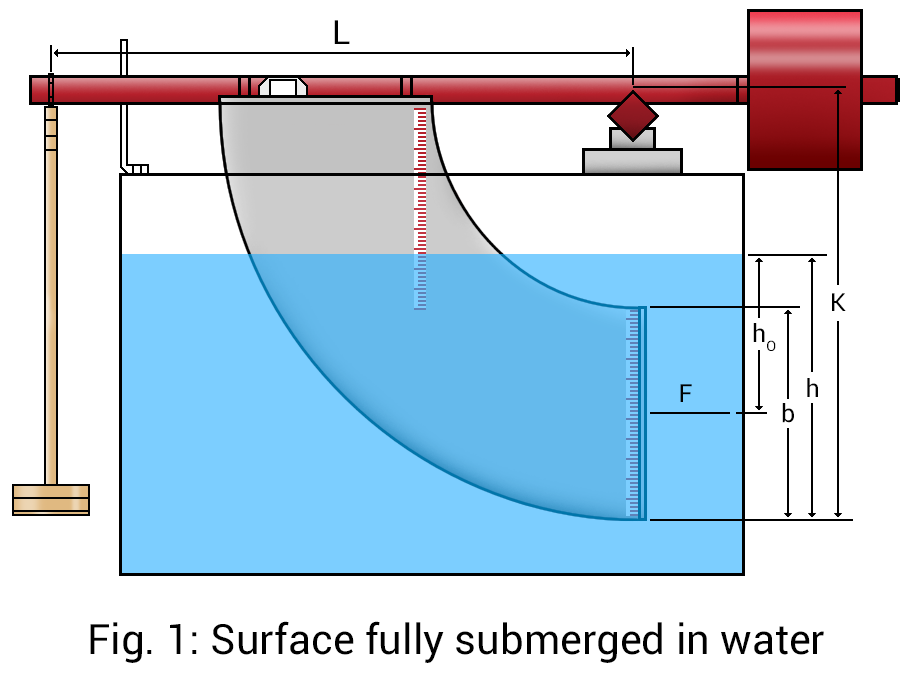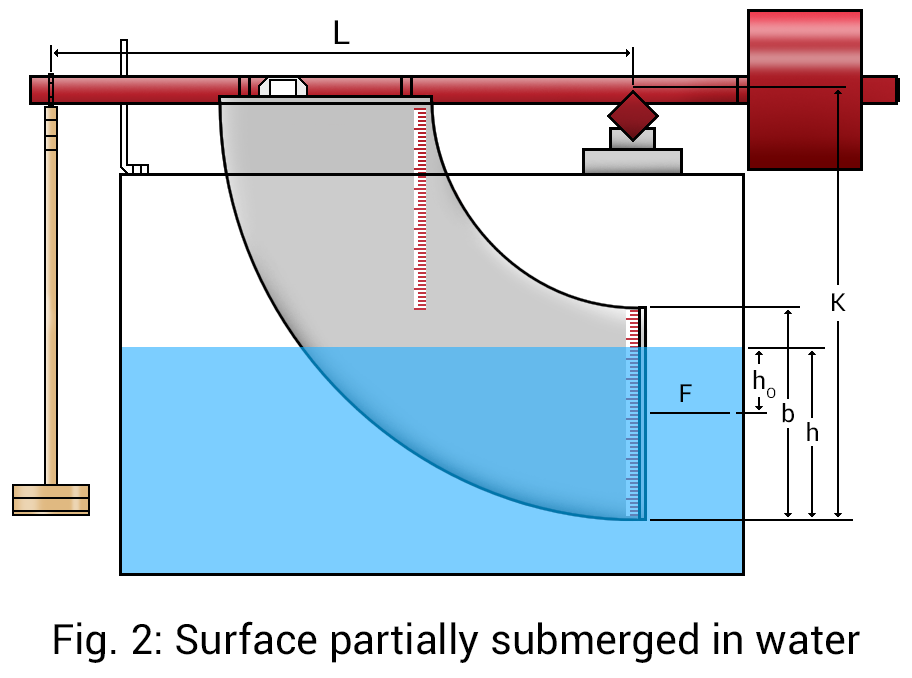Center of Pressure
Aim :
- To determine the hydrostatic force on a plane surface under partial submerge and full submerge condition.
- To determine the centre of pressure of a plane surface under partial submerge and full submerge condition.
Theory :
Fluid statics deal with the fluid's static properties and behaviour. It is known as hydrostatic in the case of liquids and it is called pneumatic in the case of gases. A force is exerted by the fluid on the surface, defined as total pressure, when a static mass of fluid comes into contact with a surface, either smooth or curved. Since no tangential force occurs for a fluid at rest, the total pressure acts in the normal direction to the surface.
In absence of any density changes, the pressure force acting on any submerged surface increases linearly with depth. At any point in a given horizontal plane, the pressure is same. It varies only with the vertical distance and is independent of the shape of the container submerged in the fluid.
Now, for the given apparatus we have,
Total force on a vertically immersed surface:
If a rectangular surface of length a and width b is vertically immersed in the fluid, you can measure the total force acting on the surface with the aid of the torque acting on the same surface:
\[T_t = wAx’(K-(h-h_o))\]
Centre of pressure of the force (in m):
\[h_o={ I_G \over {A \times x’}}+x’\]
We can calculate it under two conditions,
Area of the quadrant (in \(m^2 \)): \[A={a \times b}\]
Depth of the center of gravity from the liquid surface (in m): \[x’={h\over 1000} – CG\]
Moment of inertia for the rectangular surface (in \(m^4 \)): \[I_G = {ab^3\over 12}\]

